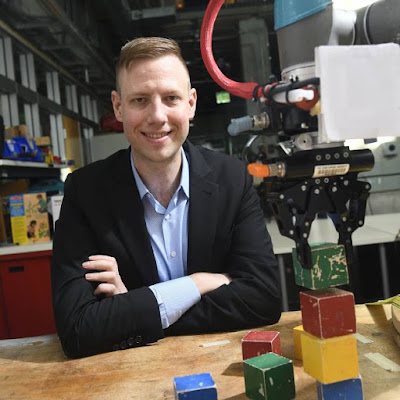Through the kind of positive reinforcement used to train dogs, a robot named Spot was able to learn a new task far faster than usual, writes Jill Rosen, Senior media representative at Johns Hopkins University.
 |
| Andrew Hundt, beside the block-stacking robot, Spot Photo: Will Kirk / Johns Hopkins University |
By using positive reinforcement, an approach familiar to anyone who's used treats to change a dog's behavior, the team dramatically improved the robot's skills and did it quickly enough to make training robots for real-world work a more feasible enterprise. The findings are newly published in a paper called, "Good Robot!"
The question here was how do we get the robot to learn a skill?" said lead author Andrew Hundt, a PhD student working in Johns Hopkins' Computational Interaction and Robotics Laboratory. "I've had dogs so I know rewards work and that was the inspiration for how I designed the learning algorithm."...
Positive reinforcement not only worked to help the robot teach itself to stack blocks, with the point system the robot just as quickly learned several other tasks—even how to play a simulated navigation game. The ability to learn from mistakes in all types of situations is critical for designing a robot that could adapt to new environments.
Source: The Hub at Johns Hopkins










